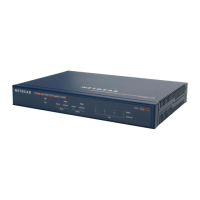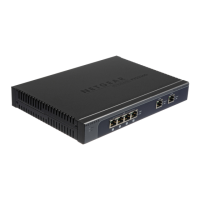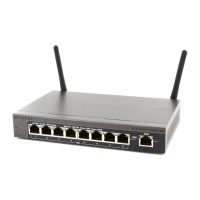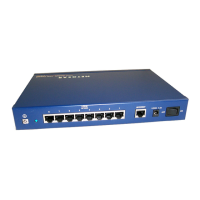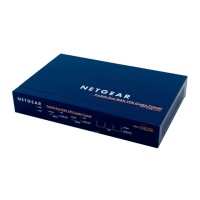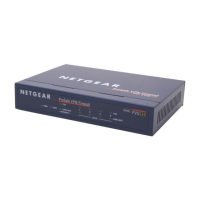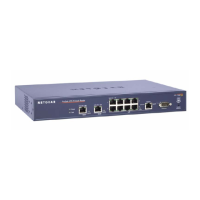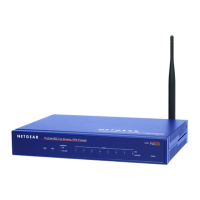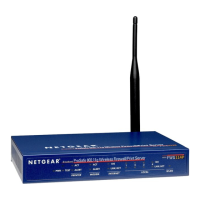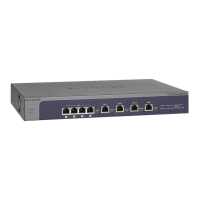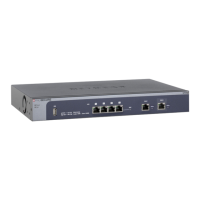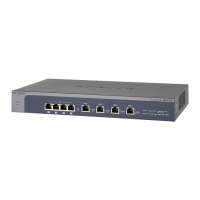Set Up Virtual Private Networking with SSL Connections
474
ProSAFE Dual WAN Gigabit WAN SSL VPN Firewall FVS336Gv3
10. Click the Apply button.
Your settings are saved. The new configuration is added to the Defined Resource
Addresses table.
Remove One or More SSL Network Resources
The following procedure describes how you can remove an SSL network resource that you
no longer need.
To remove an SSL network resource:
1. On your computer, launch an Internet browser.
2. In the address field of your browser, enter the IP address that was assigned to the VPN
firewall during the installation process.
The VPN firewall factory default IP address is 192.168.1.1.
The NETGEAR Configuration Manager Login screen displays.
3. In the Username field, type your user name and in the Password / Passcode field, type
your password.
For the default administrative account, the default user name is admin and the default
password is password.
4. If you changed the default domain or were assigned a domain, from the Domain menu,
select the domain.
If you did not change the domain or were not assigned a domain, leave the menu
selection at geardomain.
5. Click the Login button.
The Router Status screen displays.
6. Select VPN > SSL VPN > Resources.
Object Type From the menu, select an option:
• IP Address. The object is an IPv4 or IPv6 address. In the IP Address /
Name field, enter the IP address or FQDN for the object (that is,
application or service) that you assign to this resource.
• IP Network. The object is an IPv4 or IPv6 network. Configure the following
settings:
- In the Network Address field, enter the network IP address for the
objects (that is, applications or services) that you assign to this resource.
- For IPv4, in the Mask Length field, enter the associated network mask
length from 0 to 31. For IPv6, in the Prefix Length field, enter the
associated prefix length.
Port Range / Port Number Enter the port or a range of ports (0–65535) to apply the policy to. The VPN
firewall applies the policy to all TCP and UDP traffic that passes on those ports.
To apply the policy to all traffic, leave the fields blank.
Setting Description
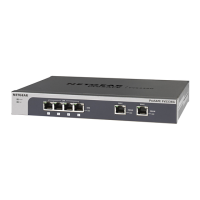
